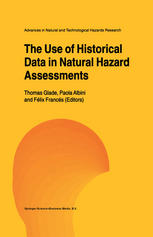

Most ebook files are in PDF format, so you can easily read them using various software such as Foxit Reader or directly on the Google Chrome browser.
Some ebook files are released by publishers in other formats such as .awz, .mobi, .epub, .fb2, etc. You may need to install specific software to read these formats on mobile/PC, such as Calibre.
Please read the tutorial at this link: https://ebookbell.com/faq
We offer FREE conversion to the popular formats you request; however, this may take some time. Therefore, right after payment, please email us, and we will try to provide the service as quickly as possible.
For some exceptional file formats or broken links (if any), please refrain from opening any disputes. Instead, email us first, and we will try to assist within a maximum of 6 hours.
EbookBell Team

5.0
98 reviewsNatural hazards such as earthquakes, landslides, floods, volcanic eruptions, tsunamis, and hurricanes cause environmental, economic as well as sociological problems worldwide. In recent years, greater availability of information and sensational media reports of natural hazard occurrence -and in particular in terms of property damage or loss oflife caused by these hazards -resulted in an increase of hazard awareness at a societal level. This increase in public awareness has often been misconstrued as an indication that natural hazards have been occurring more frequently with higher magnitudes in recent years/decades, thus causing more damage than in the past. It is still under debate, however, to which extent recent increases in damage can be related to changing frequencies of natural processes, or whether catastrophic events occur at similar rates as they always had. If the latter is the case, the reason for a greater damage can be related to dramatic population growth over the last century, with a substantial augmentation of population density in some regions. Indeed, the implications are more server in underdeveloped and developing countries, where urbanisation has increasingly occurred in hazard prone areas such as coastal zones, alluvial river plains and steep slopes, thus causing an increase in the exposure to natural hazards. Some groups of society in wealthy countries accept higher risks in order to live directly on top of a cliff or on a steep slope to enjoy panoramic views of the landscape.